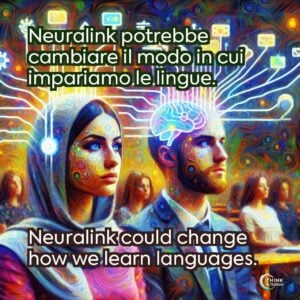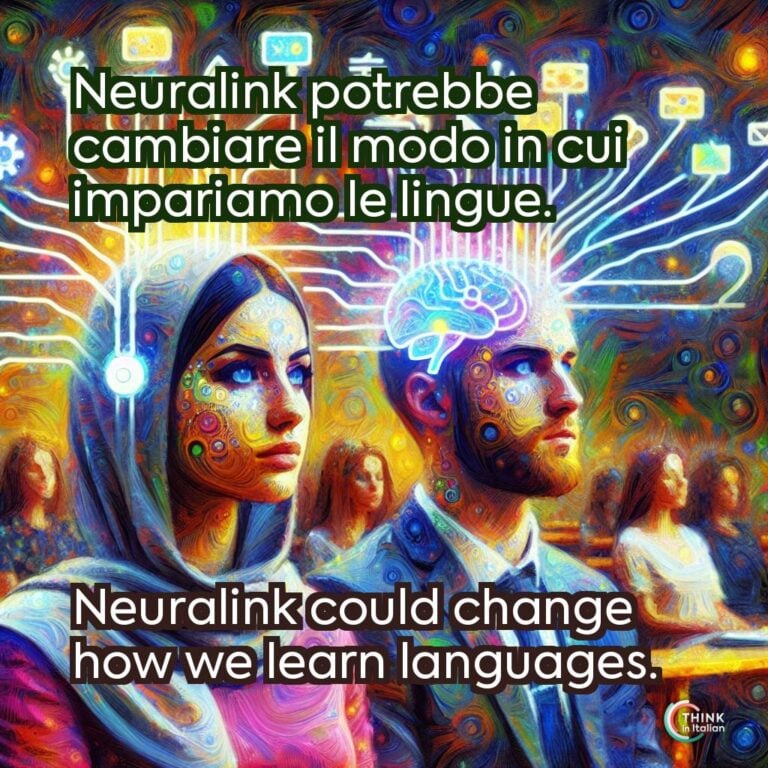Thoughts on Neuralink and The Three-Body Problem
What is Neuralink?
Neuralink is a technology that is being developed by Elon Musk‘s company: it is a brain-computer interface designed to create a direct connection between the human brain and computers.
By implanting tiny electrodes in the brain, Neuralink allow humans to communicate directly with machines and potentially with each other, bypassing traditional language.
As a linguist, these latest news made me think about how we communicate and learn languages, and I wondered: could this allow humans to communicate without language? What if learning becomes as simple as a download?
A Radical Way of Communication in the Novel “The Three-Body Problem”
I thought of this after reading The Three-Body Problem. In this novel, the aliens called Trisolarans communicate via “thought communication“, transmitting information directly from one mind to another via mental waves.
It reminded me of when, as a kid, I would come home from school too tired to tell my mom about my day and I would say “I wish you could read my mind to know what I’m thinking without me having to say it out loud”. I guess that was “thought communication”!
The implications of this type of communication are wild. Think of transparency: in Trisolaran society, there’s no lying or secrets because every thought is open to everyone, which means trust, but also no privacy.
As a linguist, I see how much we’d lose without language. Language isn’t just a tool for transferring information, it’s a bridge for culture, emotion, and history.
Redefining Language Learning
The Real-World Attempt at Mind-to-Mind Communication
Neuralink would merge our minds with AI, allowing direct human-to-machine communication and, possibly, brain-to-brain communication, just like in Trisolaran. It might be a game-changer for language learning: only by plugging in the device you could learn Italian in minutes. No study, no practice: just a simple download.
This could change how education works and open up new possibilities, especially for those who find traditional learning methods hard, making learning more accessible and inclusive than ever before.
Noland Arbaugh, the first person to receive a Neuralink implant, is already learning French and Japanese thanks to this. His experience shows that instant learning might be easier than we think.
Instant Learning: A Dream or a Nightmare?
Instant fluency sounds like a dream for language lovers like me, but would we really understand languages if we just downloaded them? Language is more than just vocabulary and grammar: it’s filled with culture, idioms, and history.
Multilingualism positively affects cognitive development for these very reasons, that is, it is not limited to language learning, but it shapes skills that go beyond mere communication.
Every time I engage in the discussion about language and culture I always use Japanese as an example, a language that relies on context, politeness, and culture. By only learning the words, you won’t be able to also grasp the cultural weight behind them.
Another topic that sheds light on how we truly communicate beyond just words is has to do with understanding how accents impact perception. The way we use the language is more relevant than the language itself.
Babbel CEO has a positive view of AI
Babbel CEO Arne Schepker believes AI can significantly enhance language learning rather than replace it. He emphasizes that AI can be used to personalize learning experiences, adapt to individual students’ needs, and provide more engaging and efficient ways to learn languages.
AI is to be leveraged to impact students’ learning outcomes positively, create jobs, and foster cultural connections, indicating a positive view of AI as a complement to traditional language learning methods rather than a substitute.
Communication vs Language
The Relationship Between Communication and Language
The distinction between communication and language is an important topic in linguistics. Although often used interchangeably in casual conversation, these terms refer to different concepts.
From a linguistic perspective, communication is any behavior that results in the transfer of information. It can be verbal and non-verbal and it also occurs in other species. It is a broad term that encompasses all forms of transmission, be it through speech, writing, gestures, facial expressions…
Think of all the conversations Italians have with hand gestures only!
Language, on the other hand, is a specific and highly structured form of communication unique to humans. It involves a system of symbols (words) and rules (grammar and sentence structure) that allow for the creation and interpretation of an infinite number of sentences and meanings.
Animals do have sophisticated forms of communication, but they lack humans-specific features of language, like abstract thinking or the ability to express future possibilities and hypotheses.
Language and Communication in Neuralink
The “thought communication” and the potential Neuralink brain-to-brain interface could redefine what we consider language and communication. They could potentially bypass the need for structured language and allow to convey meaning directly, challenging our current understanding of these concepts.
Then the question is: could Neuralink make traditional language obsolete? Some people argue that Neuralink could enable direct transmission of thoughts, emotions, and even sensory experiences, making spoken language useless.
Others – and I am one of them – believe that, even if direct communication became possible, languages would still persist for other reasons: if everything is out in the open, where is the space for interpretation, negotiation, or persuasion?
The Ethical Questions
The first think I thought of is: if our brains are not just learning languages but they are downloading them, could this cause confusion among previously learned languages?
And here the cultural issue arises again: imagine your brain switching between the English idiom “it’s raining cats and dogs” and the French one “il pleut des cordes” (it’s raining ropes). They both mean heavy rain, but their imagery and cultural contexts are different.
Also, who would get access to this technology? Would it democratize language learning or would it divide society into those who have it and those who don’t? Language is a bridge that connects people, but this would end if only some people could afford it and others were left behind.
Despite the concerns, Neuralink has clear benefits: it could help with barriers in traditional learning and redefine careers in language learning, shifting from rote memorization to deeper cultural understanding.
However, for me, learning a language is more than just knowing words or grammar. It’s the uncertainty, the challenge of pronunciation, and the way a language shapes your behavior, and the expressions that change how you see the world. That’s something no download can replace.
References
Birbaumer, N., & Cohen, L. G. (2007). Brain–computer interfaces: communication and restoration of movement in paralysis. The Journal of physiology, 579(3), 621-636.
Burwell, S., Sample, M., & Racine, E. (2017). Ethical aspects of brain computer interfaces: a scoping review. BMC medical ethics, 18, 1-11.
Hockett, C. F., & Hockett, C. D. (1960). The origin of speech. Scientific American, 203(3), 88-97.
Peirce, C. S. (1991). Peirce on signs: Writings on semiotic. UNC Press Books.
Quinteros Baumgart, C., & Billick, S. B. (2018). Positive cognitive effects of bilingualism and multilingualism on cerebral function: A review. Psychiatric Quarterly, 89(2), 273-283.








